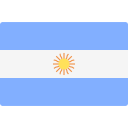Buying a Bulletproof Vest? Here's How To Find The Best One
Thinking about buying a bulletproof vest but don't know where to begin? We get it. There are lots of choices to make when it comes to a ballistic vest: concealable or overt? A vest or plate carrier? What about protection level, material, and cost?
You're investing in your safety when buying a piece of body armor. Your choice could be the difference between life and death, so you need to know the answers to these and other questions.
That's what Bulletproof Zone is here for. In this article, we'll set you up with all the information necessary to buy the best
BULLETPROOF VESTS - THE BASICS
A bulletproof vest is a piece of protective equipment made with ballistic (bullet) resistant materials such as Kevlar, ultra-high-molecular-weight polyethylene (UHMWPE), ceramic, or steel.
These materials allow a bullet or other projectile to hit the vest but not penetrate into the wearer's body.
The gear essentially fits like a typical vest - hence the name - by covering the front, sides, and back of the wearer's torso region.
WHO USES BULLETPROOF VESTS?
Most people who use bulletproof vests are in high-risk occupations - military personnel, law enforcement, security personnel, and the like. These people run the risk of exposure to gunfire on a regular basis.
But civilians can and do use bulletproof vests, too. You'll find bullet-resistant vests for children, adults, and even animals that work with law enforcement or the military!
There are a number of reasons regular people use bullet-resistant gear, though it all boils down to the same motivation: protection against bullets.
HOW DO BULLETPROOF VESTS WORK?
Generally speaking, bulletproof vests work by:
- changing the shape of the impacting bullet
- slowing it down
- spreading the energy from the hit across the whole vest instead of keeping it focused on the impact area, OR deflecting that energy away from the user
Different materials have different ways of accomplishing this.
Compare the mechanics behind two of the most common materials used in bulletproof vest armors: Kevlar or Twaron, and ceramic.
HOW DO KEVLAR OR TWARON VESTS WORK?
Kevlar (pictured above) and Twaron are highly durable synthetic fibers in the Aramid family. They're both 5 X stronger than steel on an equal weight basis and heat-resistant. When used in bulletproof vests, the fibers are interwoven and layered many times to create a web-like framework of many "nets."When a bullet impacts a Kevlar or Twaron vest, each layer of that "net" works to slow the bullet more and more until it stops moving. The resistant fiber layers end up deforming, but they also deform the bullet until it's shaped like a mushroom, which makes it even less penetrative.
Which shape is scarier?
When a bullet impacts a Kevlar or Twaron vest, each layer of that "net" works to slow the bullet more and more until it stops moving. The resistant fiber layers end up deforming, but they also deform the bullet until it's shaped like a mushroom, which makes it even less penetrative.
Which shape is scarier?
So if you're hit while wearing a Kevlar vest, you'll feel the impact across your whole body as opposed to only in the strike zone - the spot where you would have a bullet hole in your flesh if the vest wasn't there.The article originated from the Internet









































































